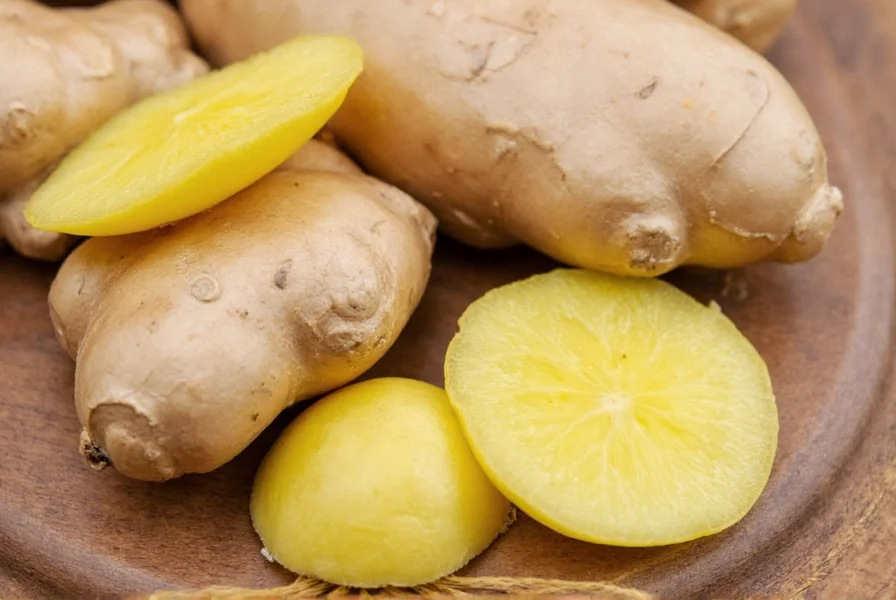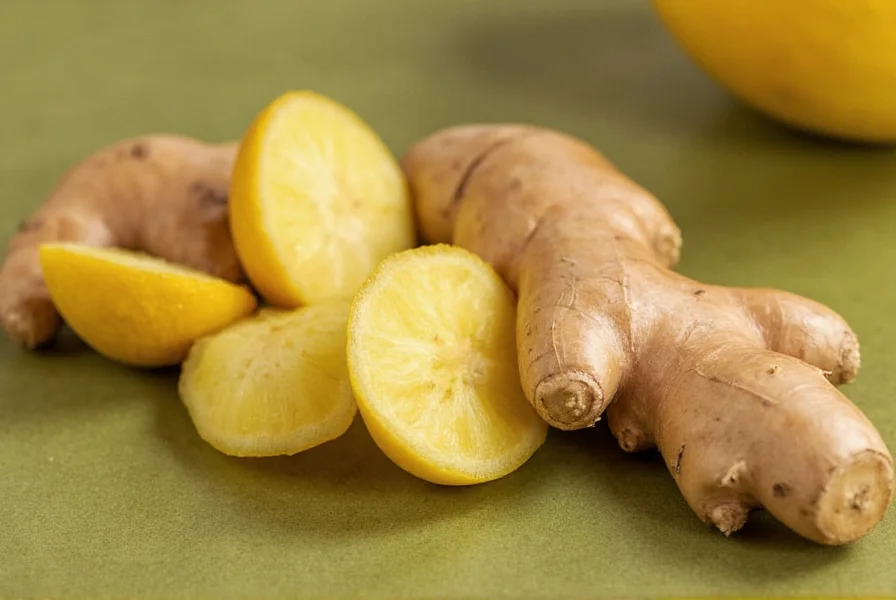There are multiple practical ways to use ginger: peel and mince fresh ginger for cooking, steep sliced ginger in hot water for tea, blend it into smoothies, or apply grated ginger topically for pain relief. The best method depends on your specific need—whether for culinary purposes, digestive aid, or natural remedy applications.
Known scientifically as Zingiber officinale, ginger root has been used for thousands of years across various cultures for both culinary and medicinal purposes. This versatile rhizome contains gingerol, the bioactive compound responsible for many of its health benefits and distinctive flavor profile. Understanding how to properly prepare and use ginger can significantly enhance your cooking and potentially support wellness.
Preparing Fresh Ginger for Use
Before you can use ginger effectively, proper preparation is essential. Start by selecting firm ginger roots with smooth skin and no soft spots. Young ginger tends to be more tender with thinner skin, while mature ginger has a stronger flavor and thicker skin.
Peeling techniques:
- Spoon method: Use the edge of a spoon to scrape off the skin—this preserves more of the flavorful flesh compared to using a vegetable peeler
- Knife method: For larger quantities, carefully slice away the skin with a paring knife
- No-peel approach: When using young ginger with thin skin, thorough washing may be sufficient

Using Ginger in Culinary Applications
How do you use ginger in cooking? The preparation method significantly affects both flavor intensity and culinary application.
| Preparation Method | Best For | Flavor Intensity | Quantity Recommendation |
|---|---|---|---|
| Finely minced | Stir-fries, marinades, dressings | Strong | 1-2 tsp per serving |
| Thinly sliced | Teas, braises, poaching liquids | Moderate | 3-5 slices per cup liquid |
| Grated | Baking, smoothies, sauces | Very strong | 1 tsp per serving |
| Ginger juice | Cocktails, dressings, finishing | Concentrated | 1/2-1 tsp per serving |
For Asian cuisine, ginger often forms the flavor base along with garlic. Try adding minced ginger to hot oil first, followed by garlic, to create what's known in Chinese cooking as the "holy trinity" of aromatics. In baking, ground ginger provides a warmer, more mellow flavor than fresh ginger—use 1/4 teaspoon ground ginger to replace 1 tablespoon fresh.
Creating Ginger Tea and Beverages
One of the most common questions about how to use ginger is for making tea. The traditional method involves:
- Slice 1-2 inches of fresh ginger into thin rounds
- Place in a saucepan with 2 cups of water
- Bring to a boil, then reduce heat and simmer for 10-20 minutes (longer simmering creates stronger tea)
- Strain and add lemon or honey to taste
For a quicker preparation, use a French press: add grated ginger and pour hot (not boiling) water over it, then press after 5-10 minutes. This method preserves more volatile compounds that can dissipate with prolonged boiling.
When exploring how to use ginger for nausea relief, studies suggest consuming 1-1.5 grams of ginger (approximately 1 tablespoon grated) can be effective. Many find ginger tea particularly helpful for morning sickness, motion sickness, or post-operative nausea.
Ginger in Natural Remedies
Beyond culinary uses, ginger has documented anti-inflammatory and digestive properties. Here's how to use ginger effectively for common wellness applications:
- Digestive aid: Chew a small piece of candied ginger after meals or drink ginger tea to support digestion
- Muscle pain relief: Create a ginger compress by soaking a cloth in strong ginger tea and applying to sore areas
- Cold and flu support: Combine ginger tea with lemon and honey for a soothing remedy
- Nausea management: Sip ginger tea slowly or chew crystallized ginger when experiencing queasiness
Research published in the Journal of Ethnopharmacology indicates that ginger's anti-inflammatory effects may help reduce muscle pain by up to 25% when consumed regularly. However, consult with a healthcare provider before using ginger medicinally if you have medical conditions or take blood-thinning medications.
Different Forms of Ginger and Their Best Uses
Understanding how to use different ginger preparations expands your culinary and wellness options:
- Fresh ginger: Best for cooking, tea, and raw applications where vibrant flavor is desired
- Ground ginger: Ideal for baking, spice blends, and recipes where texture isn't important
- Candied/crystallized ginger: Perfect for nausea relief or as a flavorful snack
- Ginger paste: Convenient for cooking—store in freezer for quick use
- Ginger powder: More concentrated flavor than ground ginger, use sparingly
When substituting between forms, remember that 1 tablespoon fresh ginger equals approximately 1/4 teaspoon ground ginger. Fresh ginger provides a brighter, more complex flavor profile with spicy notes, while dried forms offer a warmer, more earthy taste.
Storage Methods for Maximum Freshness
Proper storage extends ginger's usability. Store unpeeled ginger root in the refrigerator's vegetable drawer for 2-3 weeks. For longer storage, place ginger in a sealed container with a paper towel to absorb moisture. Freezing whole ginger root is also effective—simply grate it frozen when needed without thawing.
When exploring how to use ginger regularly, consider preparing a ginger paste in advance: peel and mince ginger, then blend with a small amount of water until smooth. Store in an airtight container in the refrigerator for up to 3 weeks or freeze in ice cube trays for convenient portions.
Common Ginger Usage Mistakes to Avoid
Many people make these errors when learning how to use ginger:
- Adding ginger too late in cooking—for maximum flavor infusion, add early in the cooking process
- Using old, dried-out ginger that lacks potency
- Peeling too deeply and wasting flavorful flesh
- Overusing ginger in delicate dishes where it can dominate
- Boiling ginger tea too vigorously, which can make it bitter
Remember that ginger's flavor intensifies over time in cooked dishes, so you may want to adjust quantities accordingly. When using ginger in sweet applications, balance its heat with complementary flavors like citrus, honey, or warm spices.
Frequently Asked Questions
How much ginger should I use per cup of tea?
For a standard cup of ginger tea, use 1-2 inches of fresh ginger sliced thinly. This provides sufficient flavor without being overpowering. Adjust based on personal preference and the ginger's freshness—older ginger may require slightly more.
Can I use ground ginger instead of fresh in recipes?
Yes, but with adjustments. Substitute 1/4 teaspoon ground ginger for 1 tablespoon fresh ginger. Note that ground ginger has a warmer, less complex flavor profile than fresh. It works well in baked goods but doesn't provide the same bright, spicy notes in savory dishes.
How do I use ginger for nausea relief?
For nausea relief, consume 1-1.5 grams of ginger (approximately 1 tablespoon grated fresh ginger) in tea, chew crystallized ginger, or take ginger supplements. Sip ginger tea slowly or suck on a small piece of candied ginger. Many find relief within 20-30 minutes of consumption.
What's the best way to peel ginger without wasting flesh?
The spoon method is most efficient—use the edge of a teaspoon to scrape off the skin. This technique follows ginger's natural contours, preserving more of the flavorful flesh compared to using a vegetable peeler which removes too much material. Simply slide the spoon under the skin and push gently to remove it.
How long does fresh ginger last in the refrigerator?
Properly stored unpeeled ginger root lasts 2-3 weeks in the refrigerator's vegetable drawer. For extended freshness, place it in a sealed container with a paper towel to absorb excess moisture. Frozen ginger maintains quality for up to six months—grate it directly from frozen when needed.











 浙公网安备
33010002000092号
浙公网安备
33010002000092号 浙B2-20120091-4
浙B2-20120091-4